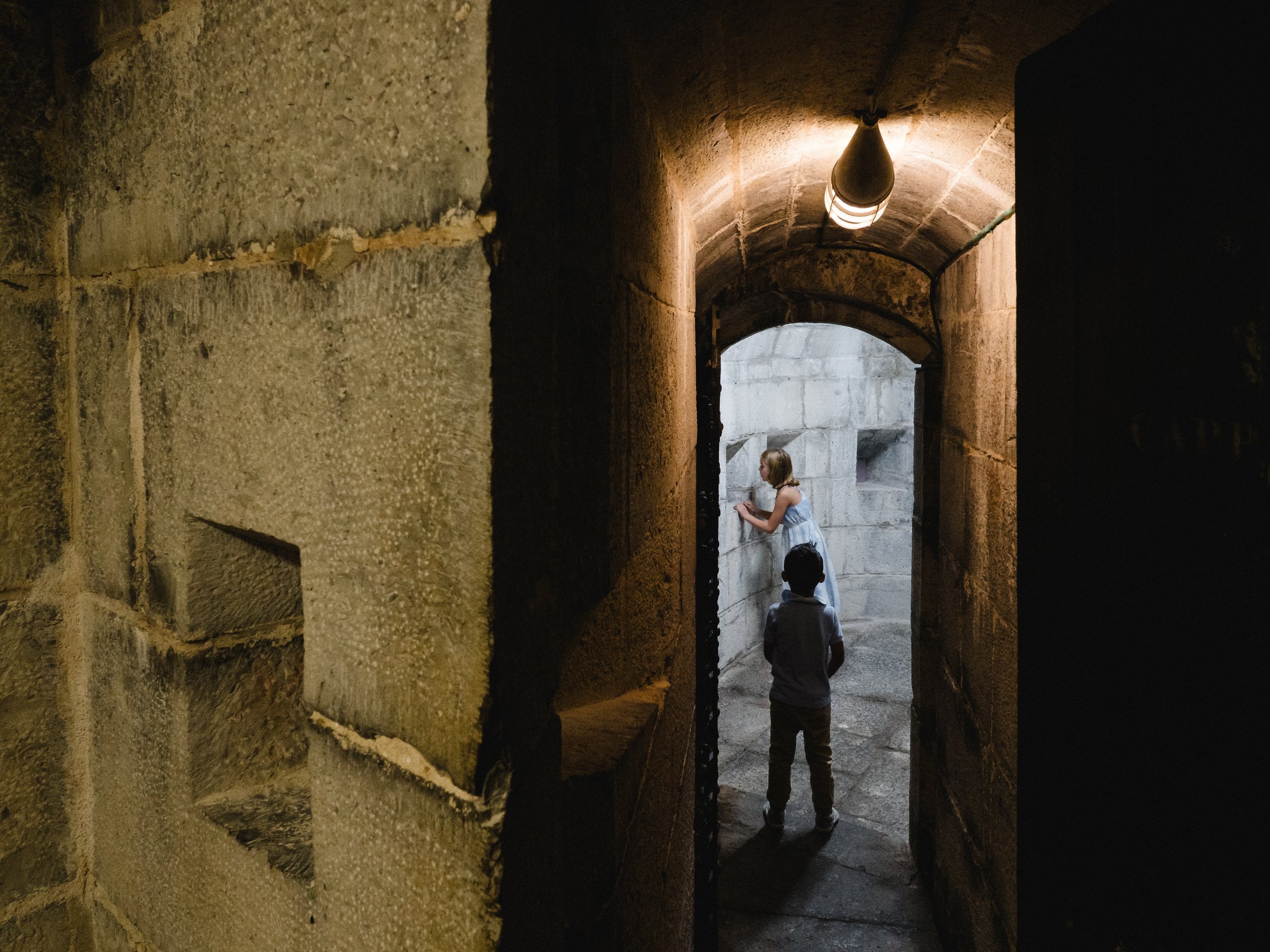
Murney Tower
Purpose
Built in 1846, Murney Tower Redoubt is part of a series of fortifications that were constructed in Kingston in response to the Oregon Crisis. This crisis was sparked by American President James K. Polk, who insisted that the United States should lay claim to all of Oregon Territory, which was then shared between the United States and British North America. Although Oregon Territory was on the other side of the continent, the British government felt it prudent to shore up defenses in Kingston, which held a strategically important position on the St. Lawrence River. As a result, they built a series of fortifications, which included four Martello Towers: Shoal Tower, Fort Frederick, Cathcart Redoubt, and Murney Tower.
Structure
Martello Towers are squat, round towers with a gun platform. Despite their relatively small size, these little fortifications were adept at preventing attacking ships from landing. Murney Tower features some key differences from the typical Martello structure. The original Martello design did not have a roof, but in Canada, the harsh winters made a roof a necessity. In addition, the gun platform of a Martello Tower is usually shaped like a clover leaf in order to house three guns whereas Murney’s is circular and built to hold two cannons, a 24-pounder and a 32-pounder. Only one, a 32-pounder Blomefield cannon was ever installed, and it remains at the Tower today. In addition to the gun platform, the Tower has two other levels, the barracks level, where soldiers would sleep, and the basement, which consists of a series of storerooms and four caponiers that extend outwards from the Tower. Each caponier has eleven rifle loopholes through which soldiers could shoot to protect the Tower’s dry ditch. Although advances in military technology would have made the Tower ineffective by the 1860s, this did not prove to be an issue as the Tower never saw combat.
Use
Although Murney Tower was never needed in combat, it did not sit empty. The Tower was used for decades as a barracks for soldiers and their families, first by the Royal Canadian Rifle Regiment (RCRR) of the British army from 1848 to 1870 and later by the Canadian militia from 1871 to 1885. During the tenure of the RCRR, the Tower was mainly used as a watch post for deserters as well as a secondary barracks. While it might be difficult to believe looking at the Tower today, at one point, six families lived inside together. This role changed when the building was taken over by the militia, which used the structure as a residence for a single military family.
Today
After being abandoned by the militia in 1885 , Murney Tower remained unused for decades and fell into disrepair. In 1921, a storm blew a piece of the Tower’s roof off, killing a young boy. It was this tragedy that prompted the Kingston community to approve the creation of the Murney Tower Museum, which opened in 1925 under the leadership of the Kingston Historical Society. As one of the last British works of defense to be constructed in the Canadian interior, Murney Tower holds a special significance to Canadian history, which led to its designation as a National Historic Site of Canada in 1930. In addition to its own designation, the Tower is also part of the Kingston Fortifications National Historic Site of Canada and the Rideau Canal World Heritage Site. Today, the Murney Tower National Historic Site of Canada continues to welcome visitors from around the world every summer.






